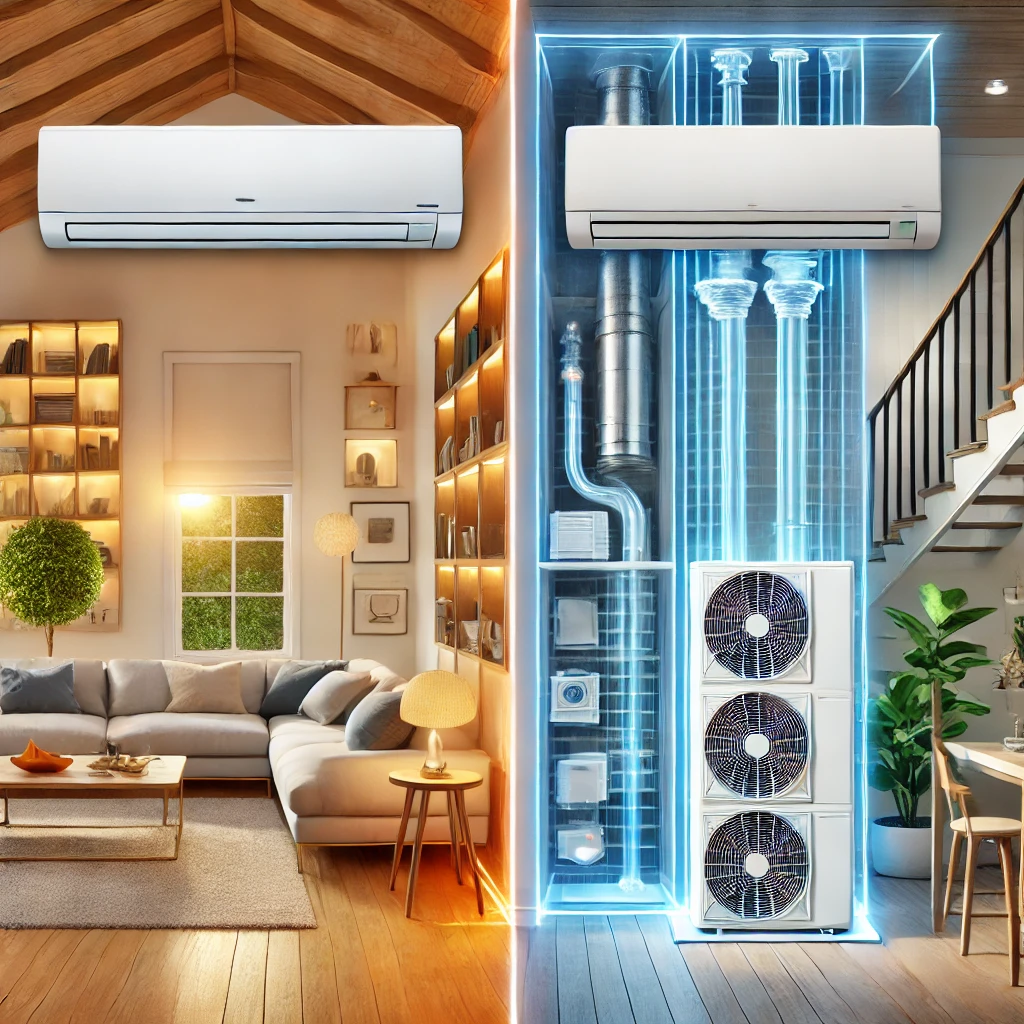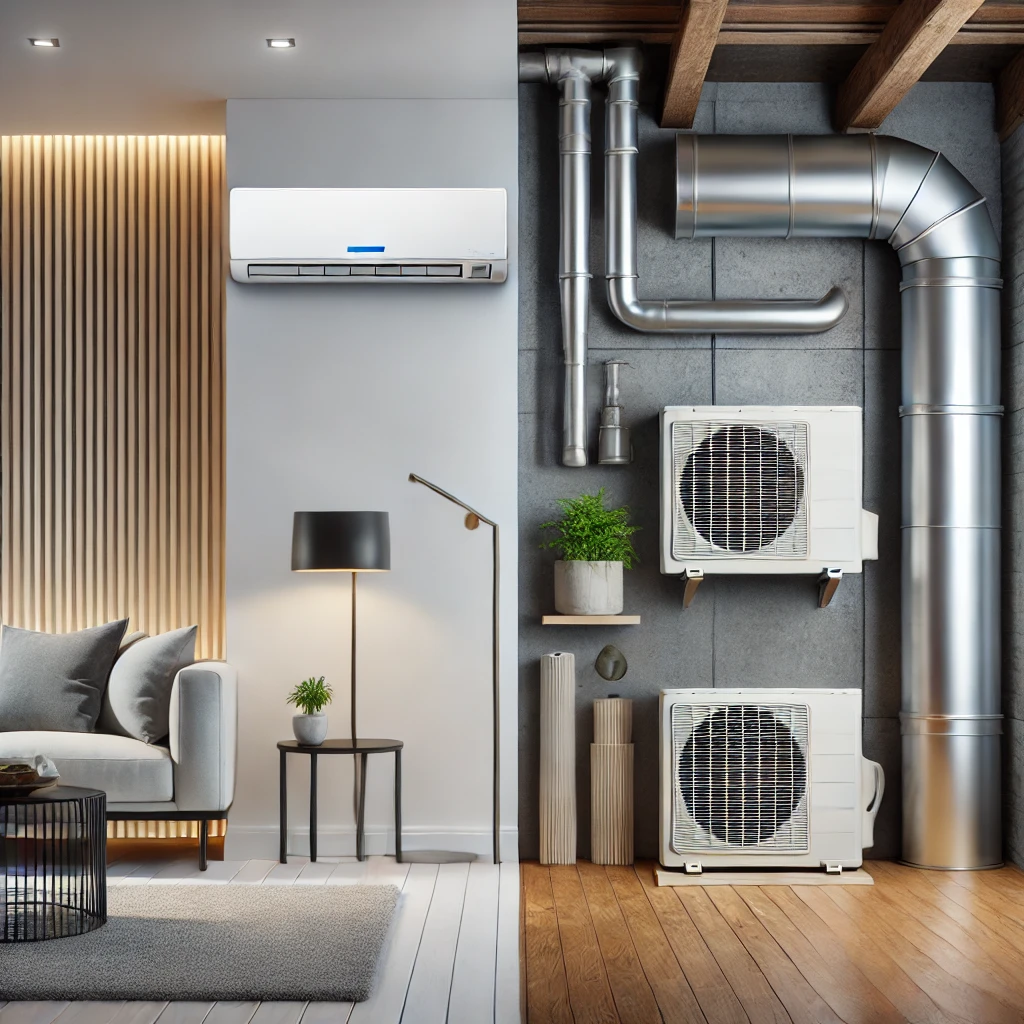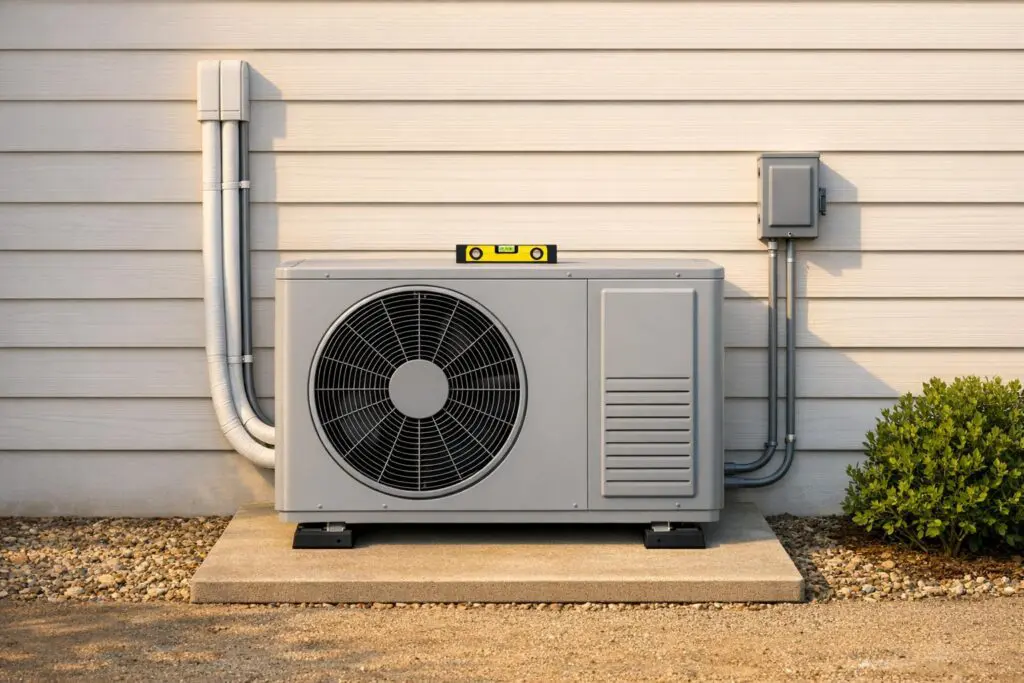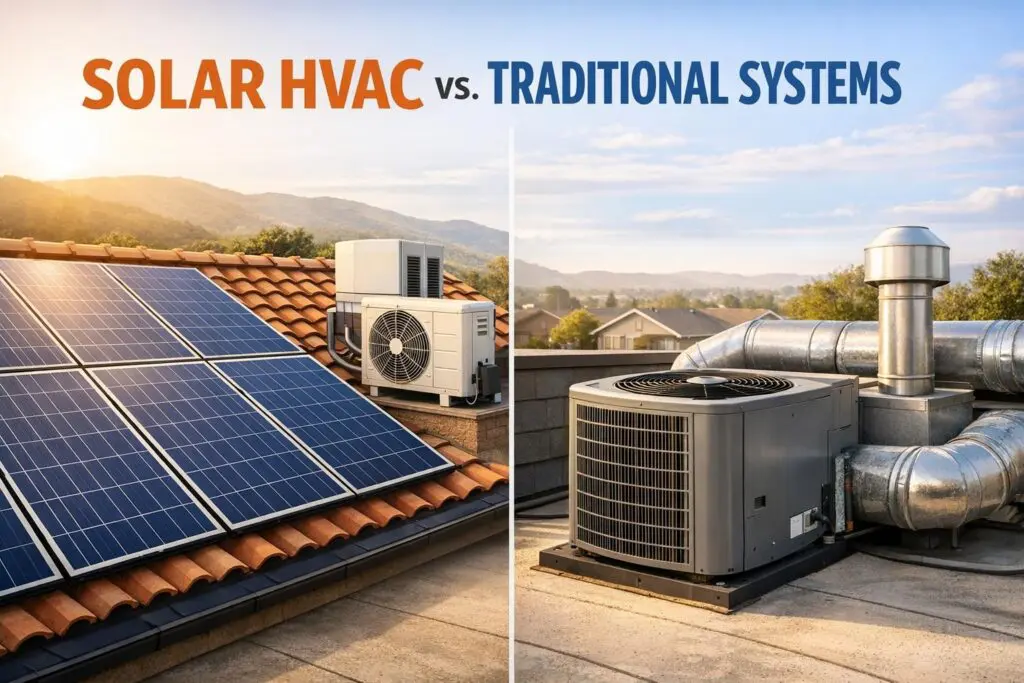What is a Ductless Mini Split System?
A ductless mini split system consists of an outdoor unit connected to one or more indoor air-handling units. These units are mounted on walls and deliver air directly into different zones of your home. This type of system is ideal for homes without existing ductwork or for adding climate control to specific areas. For more details, read our blog post What is Ductless HVAC? Myths, Unique Needs, and FAQs.
What is a Traditional Central HVAC System?
A traditional central HVAC system uses a network of ducts to distribute air throughout your home. It typically consists of an outdoor compressor unit and an indoor furnace or air handler. Central HVAC systems are common in homes that already have ductwork installed.
Pros of Ductless Mini Split Systems
1. Energy Efficiency
Ductless systems are generally more energy-efficient than traditional systems. Without the energy losses associated with ductwork, these systems can significantly reduce your energy bills. The ability to control the temperature in individual rooms also contributes to energy savings.
2. Easy Installation
Installing a ductless mini-split system is less invasive than installing a central HVAC system. There’s no need to install or modify ductwork, making it a quicker and often cheaper installation process.
3. Zoned Heating and Cooling
Ductless systems provide zoned heating and cooling, allowing you to control the temperature in individual rooms. This is particularly beneficial in homes with rooms that are used infrequently, as you can save energy by not heating or cooling those spaces.
4. Improved Air Quality
Without ducts, there’s less opportunity for dust, allergens, and other contaminants to accumulate and be distributed throughout your home. Many ductless systems also come with advanced filtration options to further improve indoor air quality.
5. Flexibility
Ductless systems can be installed in various configurations, making them ideal for a wide range of applications, including home additions, garages, and rooms that are difficult to heat or cool with a traditional system.
Learn more about ductless mini-split systems.
Cons of Ductless Mini Split Systems
1. Higher Initial Cost
While ductless systems can save you money in the long run, the initial cost of the units and installation can be higher than traditional systems. However, this can be offset by energy savings over time.
2. Aesthetic Impact
The indoor units of a ductless system are visible and can affect the aesthetics of your room. While modern units are designed to be sleek and unobtrusive, they may not blend with all décor styles.
3. Regular Maintenance
Ductless systems require regular maintenance, including cleaning the filters and ensuring the units are free of dust and debris. This maintenance is crucial for efficient operation but can be more hands-on compared to central systems.

Pros of Traditional Central HVAC Systems
1. Whole-House Comfort
Central HVAC systems are designed to heat and cool your entire home, providing consistent comfort. This is particularly beneficial for large homes where zoned systems might not be practical. For guidance on choosing the right system, read our blog post Choosing the Right HVAC System: A Comprehensive Guide.
2. Aesthetically Pleasing
With central HVAC systems, the ducts and vents are typically hidden, and the indoor units are often out of sight. This allows for a cleaner, less cluttered look in your living spaces.
3. Integrated Air Filtration
Central systems often come with advanced air filtration and purification options that can be integrated into the ductwork, providing improved air quality throughout the entire home.
4. Lower Initial Cost
For homes with existing ductwork, installing a central HVAC system can be more cost-effective initially compared to ductless systems. The infrastructure is already in place, reducing installation costs.
Learn more about our HVAC installation services.
Cons of Traditional Central HVAC Systems
1. Energy Loss
Ductwork can be a source of energy loss, especially if the ducts are not properly sealed or insulated. This can result in higher energy bills and reduced efficiency.
2. Invasive Installation
Installing ductwork in homes that do not already have it can be invasive and expensive. It often requires significant modifications to the home’s structure, which can be disruptive and time-consuming.
3. Maintenance Issues
Ductwork requires regular maintenance to prevent issues like dust accumulation, mold growth, and pest infestation. Cleaning and repairing ducts can be challenging and costly.
4. Less Control
Central HVAC systems do not offer the same level of control as ductless systems. You cannot easily create different temperature zones, which can lead to discomfort and higher energy use in unused areas.
Conclusion
Choosing between a ductless mini split system and a traditional central HVAC system depends on your specific needs, home layout, and budget. Ductless systems offer energy efficiency, easy installation, and zoned control but come with higher initial costs and aesthetic considerations. Central HVAC systems provide whole-house comfort and a cleaner look but may suffer from energy loss and require more invasive installation.
For more personalized advice and to explore which system is best for your home, contact us at Eco Temp HVAC. Our experts can help you make the right choice to ensure your home is comfortable and energy-efficient year-round.
Interested in how heat pumps perform in cold climates? Check out our blog post Do Heat Pumps Work for Heating in Chicago?












